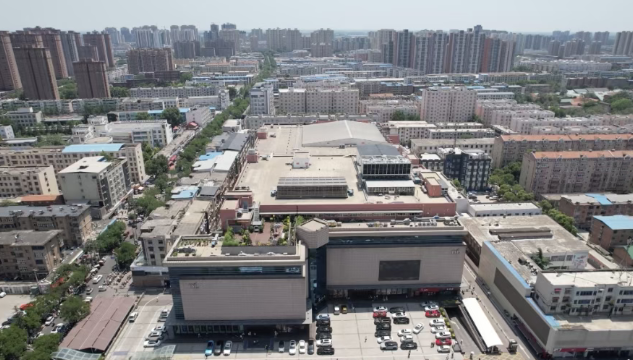More and more people are living in cities. A century ago, only 1 in 10 people worldwide resided in urban areas. According to the United Nations, in 2022, 56.9% of the global population lived in cities, and this number is expected to rise to 68% by 2050. Cities consume 75% of natural resources, generate half of the world’s waste, and produce approximately 70% of the planet’s greenhouse gas emissions. Some countries, like Singapore, have a fully urbanized population.
Living in cities offers new opportunities, but urbanization also brings significant challenges, such as poor air quality, poverty, safety concerns, and physical health issues like respiratory and cardiovascular diseases. Additionally, there are less obvious but equally critical problems that affect quality of life, including social isolation, stress, depression, and anxiety.
The power of green spaces
One of the important factors influencing well-being and quality of life in big cities is access to green spaces. Moreover, green spaces play an important role in the sustainable development of cities by creating environmental, economic, aesthetic, social and psychological benefits. They improve environmental conditions, generate biodiversity. Green spaces reducing the carbon footprint of a city and can help to protect residents from heat waves or flooding. They create outdoor recreational spaces and active lifestyles. This contributes to improving the citizens’ health and quality of life. Because of that the World Health Organization recommends that all people reside within 300 meters from green space.
Access to green space is particularly important for children. It enhances memory, attentiveness, and learning abilities, improves socialization, and provides nature-based opportunities for education and play that develop motor skills.
Recent studies conducted in China and England show that feeling more connected with nature makes people more likely to adopt positive environmental behaviors. This suggests that green cities not only improve the physical and mental health of their inhabitants but also raise awareness about the importance of nature. Additionally, green spaces can attract tourists, as seen with Singapore’s Gardens by the Bay or New York City’s Central Park.

Many studies highlight the importance of green spaces for physical and mental well-being. For example, the French Landscape Federation and the National Trade Association for Landscape Contractors estimated in 2014 that EUR 5 billion in health costs could be saved annually in France if everyone had a view of green space from their home. A fascinating study in Toronto by Berman and colleagues showed that adding just 10 trees to a city block had a significant impact on people’s perception of their health and well-being, equivalent to earning an additional USD 10,000 per household.
Access to the power of green spaces
The COVID pandemic has highlighted that many people lack sufficient access to nature. Additionally, there is significant inequality among city residents when it comes to green space access. Studies from various countries show a clear disparity between affluent residents of “garden cities” and those living in underprivileged areas. For example, a 2020 survey by Natural England found that children from low-income families spent less time outdoors in green spaces during the pandemic compared to children from higher-income families. Green spaces are also less accessible in communities with a high proportion of immigrants and ethnic minorities. This inequality is further exacerbated by the fact that green spaces in lower-income and immigrant neighborhoods are often of poorer quality with fewer developed facilities.
The creation and preservation of green spaces have become a growing focus in smart and sustainable city programs, especially in densely populated urban areas. These efforts go hand-in-hand with initiatives for cleaner public transportation, waste recycling, smart resource usage, and improved communication and participation methods. One of the goals of the 2030 Agenda for Sustainable Development includes a target to ensure universal access to safe, inclusive, and accessible green and public spaces, particularly for women, children, the elderly, and persons with disabilities.
Green spaces in highly urban areas
How can we increase the number of green spaces in cities with dense building and make them more accessible? One of the ways to do it is the use of different forms of green areas. Modern green spaces include not only big parks (including smart parks) and green streets but also green roof, green walls, green terraces, green spaces in non-obvious places like factories, roads etc. The importance of “new” “small” types of green places (green roof, green walls, green terraces) is especially high in the cities with dense buildings. They make the significant contribution to improving the environmental situation and, accordingly, the quality of life. For example, according to ScienceDirect research, green wall can reduce air pollutants by 24-61% and noise by up to 40%. 1 m2 of green wall can remove 2.3 kg of carbon dioxide from the air and provide 1.7 kg of oxygen.

The development of these forms of green space not only improves city environment but also promotes inclusiveness and citizen’s access to green space because this form can be small and can be introduced in all districts of a city including districts with dense buildings. Green spaces of relatively new forms (vertical garden, green roof, green factories etc.) can also be what makes or breaks a city, and we can see some successful examples of incorporating nature into urban environments for residents and future generations. Let’s mention some innovative projects with these forms to show the possibility of combination of different sustainable development tasks and to illustrate effects we can get for improving our quality of life in the midst of steel and glass (part II).


